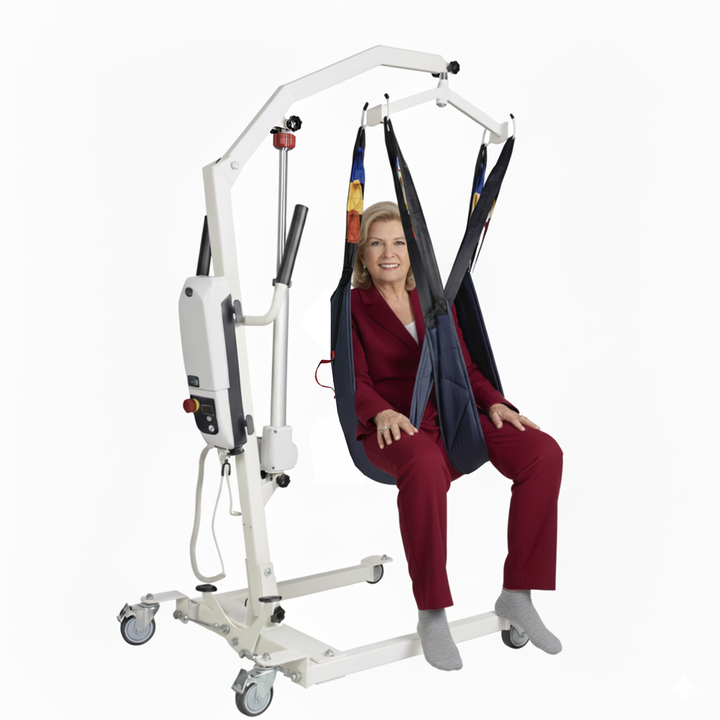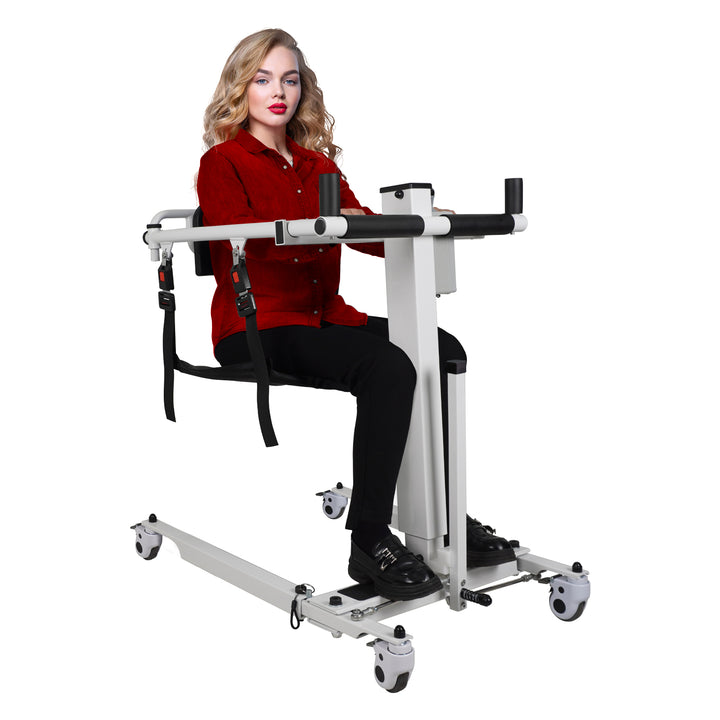Transforming Patient Care with the Achairgo Portable Patient Lift
Elevating Patient Care and Empowering Caregivers: The Achairgo Revolution

A New Standard in Patient Transfers: Better for Patients, Better for Caregivers
The Achairgo Portable Patient Lift is more than just an assistive device; it's a fundamental shift in patient care methodology. By prioritizing efficiency, safety, and versatility, it redefines the transfer process for both the individual and the caregiver.
Through its smooth and controlled mechanics, this advanced lifting system significantly reduces the stress and physical discomfort often associated with patient transfers. The gentle, stable motion minimizes anxiety, fostering a calmer and more secure experience for the patient.
Unlike conventional manual handling—which can feel abrupt or undignified—the Achairgo ensures repositioning is always conducted with the utmost respect for the patient's physical and emotional well-being. Furthermore, its supportive design encourages patient participation where possible, promoting a sense of independence and boosting confidence during recovery and daily routines.

The Strategic Shift to Single-Person Care
As healthcare systems worldwide face mounting pressures, facilities are increasingly adopting single-person care solutions to enhance operational efficiency without compromising the quality of care. This evolution in practice is driven by critical needs and delivers substantial benefits.
A primary driver for this transition is the need to address systemic caregiver shortages while upholding high standards of patient care. The Achairgo Portable Patient Lift empowers a single caregiver to safely and effectively manage transfers that would traditionally require multiple staff members. This crucial capability reduces dependency on additional personnel, freeing up valuable human resources for other critical patient-facing responsibilities.
Moreover, the ergonomic design directly mitigates the risk of caregiver injury—a leading cause of absenteeism in the healthcare sector. By creating a safer working environment, facilities can improve staff retention and reduce injury-related costs. These efficiency gains translate directly into significant cost savings, allowing healthcare organizations to optimize their budgets while enhancing the well-being of both their patients and their staff.
- Choosing a selection results in a full page refresh.
